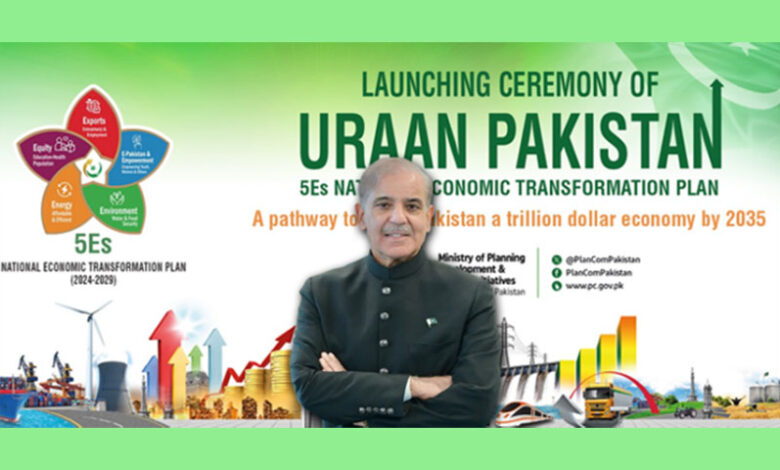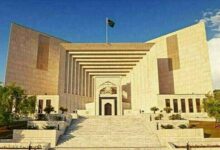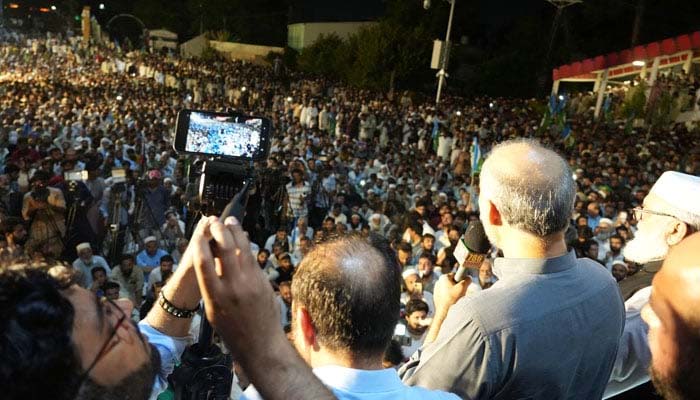Prime Minister Shahbaz Sharif Launches ‘Udaan Pakistan Program’ to Boost Economy Amidst Challenges

Islamabad:On December 31, Prime Minister Shahbaz Sharif officially launched the *Udaan Pakistan Program*, a bold initiative aimed at lifting Pakistan’s economy to new heights. During the launch ceremony, the Prime Minister highlighted that the country has successfully achieved macroeconomic stability, and now the focus will be on transitioning from a stable economy to a robust one. He emphasized that the *Udaan Pakistan Program* centers on creating an export-based economy, with a special focus on key sectors such as IT, manufacturing, agriculture, minerals, labor, and the blue economy.
### Ambitious Export Target
One of the key objectives of the *Udaan Pakistan Program* is to achieve annual exports worth $60 billion, a target that aligns with the government’s push for a more export-driven economic model. Experts have welcomed the announcement but raised concerns about the practicality and long-term success of such ambitious goals without proper frameworks and implementation strategies.
### Economic Stabilization and IMF Program
In recent months, Pakistan has made significant strides in stabilizing its economy, evidenced by the steady value of the Pakistani Rupee, a reduction in inflation rates, and a decrease in interest rates. Currently, the country remains under the IMF program, working towards fulfilling the terms of a $7 billion bailout package that includes reforms in tax, privatization, and energy sectors. The *Udaan Pakistan Program* is seen by some as a potential game-changer for Pakistan’s economic future, but questions remain about whether it could lead to independence from the IMF in the long run.
### Expert Opinions: Will ‘Udaan Pakistan’ Deliver?
Despite the optimism surrounding the *Udaan Pakistan Program*, economic experts have expressed skepticism about its potential to drive real change. Economist **Qaiser Bengali** shared his concerns with **V News**, stating that while the announcement of such programs is common, the lack of a concrete framework raises doubts about their effectiveness. He noted that previous plans, like the *Second Five-Year Plan* and others, were often declared with high hopes but failed due to a lack of execution. According to Bengali, without a clear and actionable strategy, this program would remain nothing more than a symbolic announcement. He also pointed out that the government’s repeated emphasis on promoting the IT sector seems misguided given the persistent issues with internet infrastructure in the country.
### Political Instability as a Barrier
Dr. **Farakh Saleem**, another prominent economist, echoed similar sentiments, stressing that while the intentions behind the *Udaan Pakistan Program* are commendable, the lack of a clear roadmap and political stability poses significant hurdles. He pointed out that such initiatives require a stable political environment to succeed, something Pakistan currently lacks. He also emphasized that without addressing these fundamental issues, the program might not achieve its desired outcomes, and even if successful, it would take time for Pakistan to move beyond its reliance on the IMF.
### Lack of Clear Targets and Actionable Steps
Economist **Shahryar Aziz** was even more critical, stating that the *Udaan Pakistan Program* appeared to be little more than a vague concept with no clear roadmap for implementation. He noted that the goals were not sufficiently detailed and that key questions about the timelines and costs associated with each target remained unanswered. Aziz also argued that some of the proposed initiatives, like broadening the tax base, were not accompanied by concrete plans for execution, leaving too much ambiguity in the air.
He likened the plan to a college student’s assignment on how to fix the economy, rather than a comprehensive, well-thought-out proposal prepared by the experts and financial resources available to the Pakistani government.
### The Road Ahead
The experts all agreed that for the *Udaan Pakistan Program* to succeed, it would require a clear and detailed framework, political stability, and strong leadership to overcome the prevailing challenges. While the program may hold potential, much remains uncertain about its ability to deliver on its lofty promises. As **Shahryar Aziz** succinctly put it, “Without clarity on the specifics of how these targets will be achieved, it is difficult to say if this program can really free Pakistan from its dependence on the IMF.”
The government’s challenge will be to turn this ambitious program into a workable plan, ensuring that it moves beyond announcements and into tangible outcomes for the country’s economy. Until then, the *Udaan Pakistan Program* will continue to face scrutiny from both economic experts and the public.






